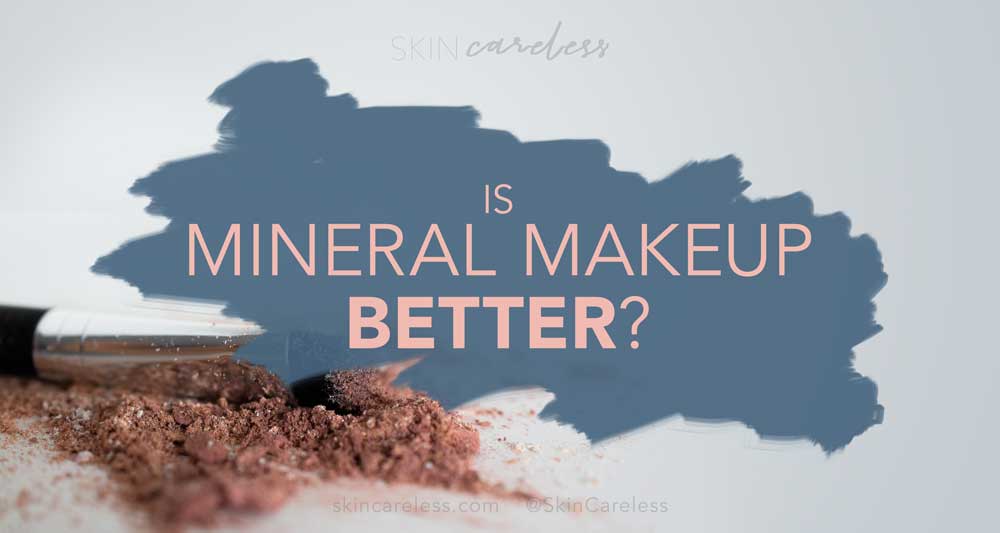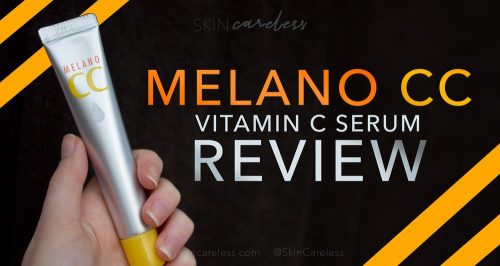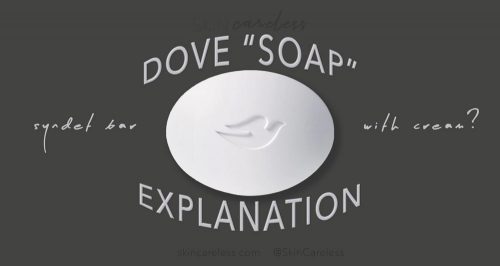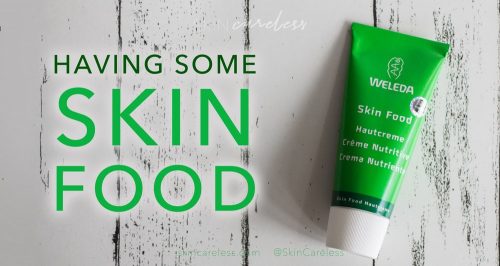Every time I go to my wonderful skin clinic for treatments like Laser Genesis, IPL or Clear + Brilliant, they always see my super red face and acne and mention that mineral makeup would be the best choice of foundation to cover it up if I wanted, while also being kind to my angry skin. I’ve even been told that it helps heal the skin. I always kind of just took that at face value, assuming that they knew more than me. But lately I’ve been wondering: is that really true? Is mineral makeup some sort of magic?
The mineral makeup boon
Mineral makeup make a big splash back in the 2000s. When makeup was taking off as an everyday accessory in a new way, mineral makeup came on the scene as a counter to the traditional ‘unnatural’ image of foundation and powders. This mineral makeup movement – led by companies like Bare Minerals – claimed unbeatable coverage, invisible finishes and healthier skin. Soon, mineral makeup had a cult-like following and every beauty brand under the sun released their own mineral powder makeup of every possible kind.
What is mineral makeup?
Mineral makeup is made with dry mineral oxides that resemble skin tones, or other colours such as blush and eyeshadow, which are buffed onto the skin, usually using a dense kabuki brush. They provide coverage that’s shine-free yet luminous, and they’re seen as acne-friendly, oil-free, hypoallergenic, breathable and ‘safe’.
The implication then seems to be that ‘regular’ makeup can penetrate into the pores or even the body and cause irritation. Mineral makeup is advertised as sitting on top, harmlessly offering coverage without damage. How true are those claims?
Mineral = makeup
Mineral makeup is not fundamentally different from other makeup. Almost all cosmetics are coloured and pigmented using the same ‘mineral’ bases: namely, oxides and micas. That’s how makeup is colourful, sparkly, shiny and pigmented.
The majority of the marketing hype surrounding natural mineral makeup is just that – marketing. Cleverly chosen phrases and terminology to create a vibe around a product that suits the target market. Liquid mineral makeup = regular liquid makeup. Powder mineral makeup = regular powder makeup. They share ingredients and function. For the most part, all makeup is equal. Ok, continuing on.
Cosmetics and our bodies
First, it’s important to understand the interaction between cosmetic products and the skin. Ingredients don’t just seep down into the skin and then the blood stream. If they did, way more medications would be available in topical or patch form. The majority of what you put on your skin stays right there. When companies and consumers talk about something ‘entering the pores’, that’s not some magical portal to inside your body. A pore is just a tiny indentation containing a hair and sebum follicle inside. Pores are all over the body, some being so tiny they’re nearly invisible, some with thick hairs, and some much bigger thanks to being responsible for a large amount of oil production, like on the face. Products that work their way into pores (including, but not limited to, moisturisers, liquid foundations or smoothing silicone primers) simply stay there until they’re either washed out with a good double-cleansing routine, or get caught up in a pore blockage – potentially but certainly not always caused by the product itself.
Pore size
The size of pores differs widely from person to person, but also between age groups and ethnicities, ranging between around 195,451 to 529,256nm in diameter across the board.
Particle size
According to cosmetic ingredients manufacturers, non-nano titanium dioxide used in cosmetic formulations has a particle size of around 200-250nm. That’s over 780 times smaller than the size of the pore – easily small enough to fully enter a pore.
Another common but less-featured ingredient due to its use as a filler to bulk up or improve the flow and texture of products is talc, measuring from 4000 all the way up to 74000nm. That means even the biggest pieces of baby-powder style talc would be 2.6x smaller than the smallest pore. It’s been shown to be totally safe in cosmetics and I could find no evidence to support the claims that it irritates even sensitive skin.
Mica – the coloured mineral that gives a rainbow of hues and sparkles – has a size that varies widely depending on effect, but is capped at 149,000nm by safety regulations. Even still, it’s small enough to freely enter a pore.
I could go on.
We can come to one conclusion: All makeup goes into your pores! And that’s ok!
All that is to say, the ingredients in both liquid and powder makeup, mineral or not, are very well small enough to go right inside your pores and hang out in there. They (aside from some very specialised ingredients) go no further and simply sit inside, waiting to be cleaned out. Makeup being able to enter your pores is half of what makes it look good. It’s not inherently dangerous. All forms of makeup are basically safe and harmless!
Benefits of mineral makeup
So the marketing is garbage. But does mineral makeup have qualities that set it apart after all? Anything else that makes it better for our skin?
The answer is potentially yes, but these are shared by all powder makeups.
Firstly, it makes travel a breeze, with no risk of spilled foundation.
Powder formulas often have fewer ingredients like solvents, and fewer ingredients do make it easier on people with sensitive skin to avoid their triggers.
But it also comes with its own set of drawbacks, too.
Drawbacks of mineral makeup
Powder formulas are not good for dry skin, by virtue of its powder format. Not to mention the mess. A lack of binding ingredients means it’s less long-lasting than liquid and cream formulas. Many people find it offers them less coverage. And finally, it requires an innately irritating application method: buffing with a brush. There’s no alternative like there is with makeup sponges for liquid foundation.
Conclusion
In general, don’t take everything your read at face value. I’ve read one anti-talc post that claims using talcum powder can lead to Granulomatosis. Only deep in the article do they mention that this is actually when IV drug users inject oral medication containing talc into their bloodstream. So, probably not the most accurate representation of how we use talc in cosmetics.
Mineral makeup, non-mineral makeup, it’s all the same. All most mineral makeup has going for it is the powder formula, and even that has downsides. So basically, don’t be fooled by fearmongering marketing, and consider each foundation individually and not by what ‘category’ of beauty it claims to be. So relax! Whether your makeup claims to be mineral based or not, it probably doesn’t matter and it’s not nearly the most important of the many complex, interconnected influences on your skin.





